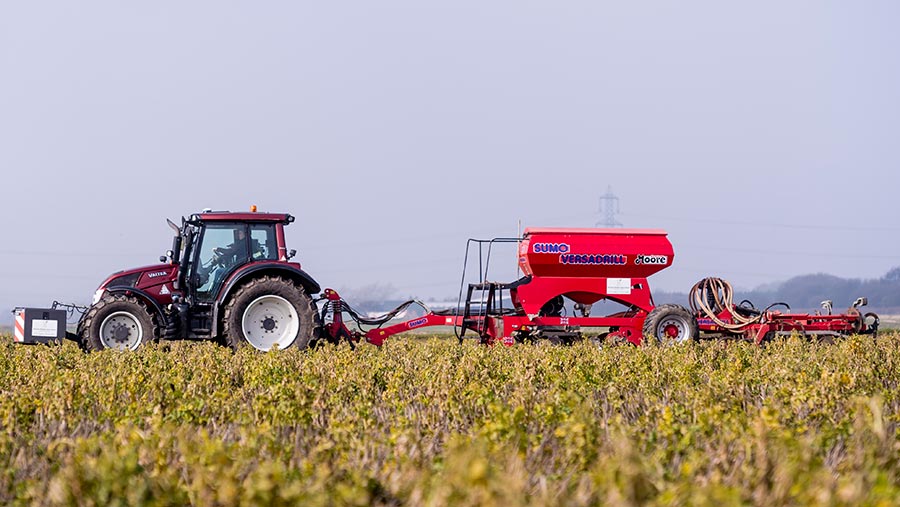Video: No-till converted grower to trial direct-drilled vining peas
New to no-till grower Richard Boldan is driving forward his plans to convert to a reduced cultivation system for a more sustainable future, with ambitions to grow more spring crops and establish vining peas by direct-drill.
He farms 75ha of easy-working silty and sandy soil in the East Yorkshire village of Asselby, with land running down to the north bank of the River Ouse.
As he decided to switch systems only two years ago, this harvest will see the first barley, oilseed rape and wheat crops established by direct-drilling into decaying cover-crop residue.
Mr Boldan’s key aims are to maintain healthy soils, safeguard organic matter levels and increase land productivity. He also sees the cost-saving benefits as timely, given current depressed grain prices.
See also: Part 1: Yorkshire grower shares his first experiences of no-till
Despite drilling into cover-crop residue, Mr Boldan found blockages weren’t an issue during his autumn establishment campaign with his trusty secondhand Sumo Versadrill, although lessons were learned when it came to seed rates of direct-drilled oilseed rape.
Recap: Richard Boldan explains his move to no-till
Spring cereal establishment
However, Mr Boldan’s first crop of no-till spring wheat barley, drilled on 20 March, did suffer from slugs and challenging weather.
“Conditions were good in terms of travelling and soil moisture, but it was cold in March and so the crop was slow to get going,” he explains.
Farmyard manure was spread over the cover-crop residue before spring drilling so there was about an inch of residue to drill though, but the Sumo Versadrill coped well with this.
“Problems with slugs and the cold meant that the spring barley is shorter than I would have liked and spring wheat was also slow to grow away from damage.”
It is the first time that Mr Boldan has grown spring barley for a number of years and he has been pushing it to try to get the best yields possible. As a result, the crop hasn’t been left short of nitrogen, with 160kg/ha applied in total.
Meanwhile, some contract work to direct-drill spring barley in mid-April on land that was left bare over winter and had stayed wet was more difficult, he adds.
“The land was quite leathery and left open channels in places, but overall it looked OK and the crop established well. It just proves that patience is so important when you are direct-drilling.”
Next year Mr Boldan will rejig his rotation to incorporate more spring cropping. He aims to establish cover crops this autumn using a low-disturbance tine drill with shallow points.
The idea is that the low-disturbance drill will be used to drill into dead material such as chopped straw, which caused some issues last time around. The disc direct drill will be used into green cover crops when spring drilling.

© Jim Varney
Direct-drilling vining peas
Also in the autumn pipeline is a trial to establish vining peas by direct drill, something Mr Boldan is confident will be a success.
He will be one of just a handful of growers to try this out, with funding from the Processors and Growers Research Organisation (PGRO), Birds Eye and the Green Pea Company, among others.
“I’m happy enough that peas can be direct-drilled successfully but it will possibly be a problem in a wet harvest, with the potential for more damage being done to the soils.
“But as years pass, my soils should travel better, with the benefits of no-till and cover crops, so hopefully this should become less of an issue in the future.
The trial will start with a cover crop being drilled after winter wheat this autumn and then direct-drilling vining peas in the spring.
Possible species to be included in the cover-crop mix are legumes such as vetch and clover, but Mr Boldan is worried about diseases such as foot-rot and pea cyst nematode building up.
As a side trial to the main direct-drilling experiment, he hopes to dedicate a small area of the trial to sow a singular vetch cover crop to investigate the effects that this has on the following pea crop.

